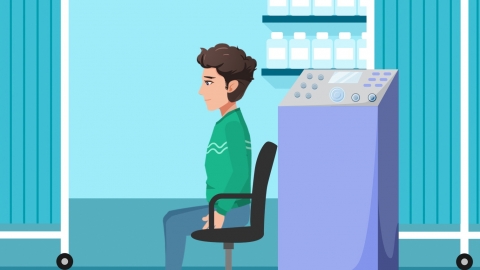What are the complications of radiofrequency treatment for hepatic hemangioma?
Radiofrequency ablation (RFA) for liver hemangioma is a commonly used minimally invasive treatment method. Although it has a relatively high safety profile, complications may still occur, including bleeding, infection, damage to surrounding organs, skin injury, and worsening pain. A detailed analysis is as follows:

1. Bleeding: During the procedure, intrahepatic vessels or blood vessels at the puncture site may be injured, leading to hemorrhage. Minor bleeding may manifest as local oozing or hematoma formation, while significant bleeding can result in hypotension, tachycardia, and other signs of shock. It is often associated with inadequate vessel ligation or coagulation dysfunction, requiring prompt hemostatic intervention.
2. Infection: Local infection at the puncture site or within the liver may occur, presenting with symptoms such as fever, redness, swelling, and pain. Infections are typically caused by insufficient aseptic technique during the procedure or improper postoperative wound care. Severe cases may lead to hepatic abscess formation, necessitating targeted antimicrobial therapy.
3. Injury to surrounding organs: The thermal effect of radiofrequency ablation may affect adjacent organs such as the gallbladder or gastrointestinal tract. Gallbladder injury may present with abdominal pain and fever, while gastrointestinal injury may cause nausea, vomiting, or hematochezia. These complications are often related to excessive ablation range or close anatomical proximity of the organs.
4. Skin injury: The skin around the puncture site may develop erythema, blistering, or burns due to heat conduction from the radiofrequency energy. Patients with thin skin or those treated at higher power settings are at greater risk. Symptoms include local pain, hyperpigmentation, and, in severe cases, skin ulceration.
5. Worsening pain: Some patients may experience increased pain in the hepatic region after the procedure, typically presenting as persistent distending or stabbing pain. This is usually caused by post-treatment hepatic tissue edema and inflammatory response, and generally resolves gradually within 1–2 weeks. However, if pain progressively worsens, it may indicate the presence of other complications.
After treatment, vital signs and the puncture site should be closely monitored. Wounds must be kept clean and dry, and strenuous physical activity should be avoided. A light, easily digestible diet is recommended to reduce the burden on the liver and promote recovery.




